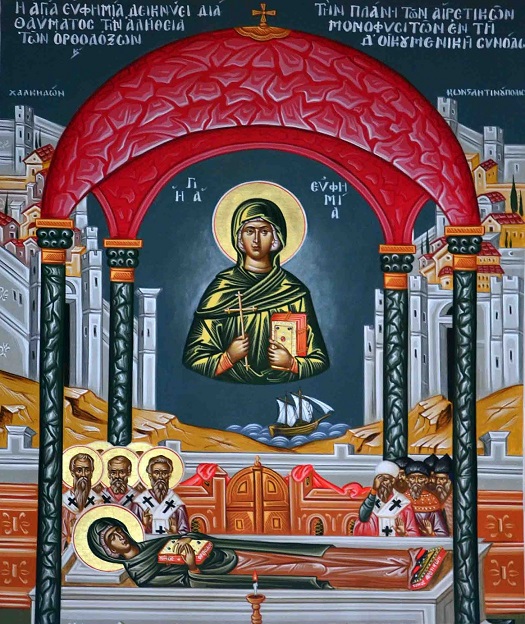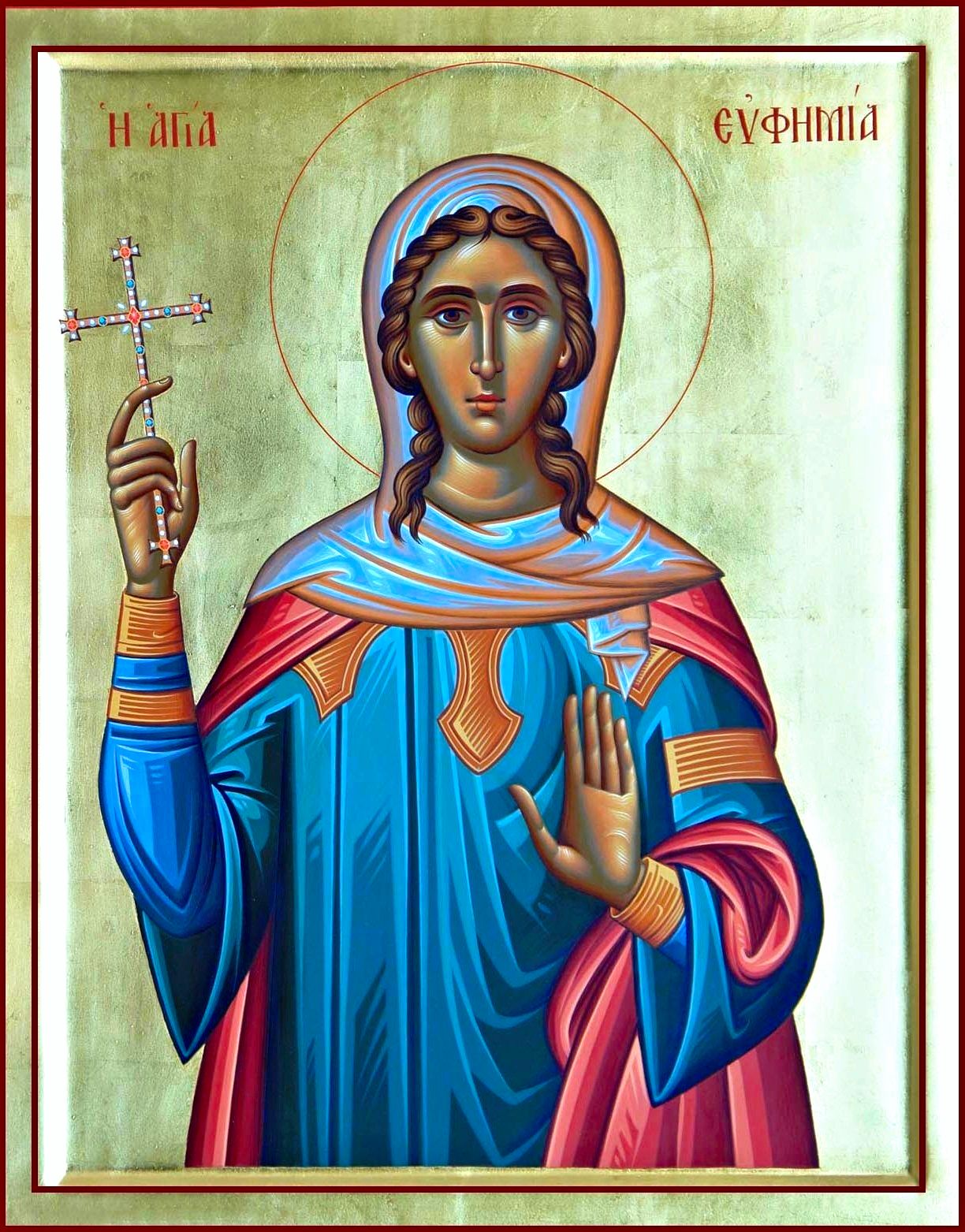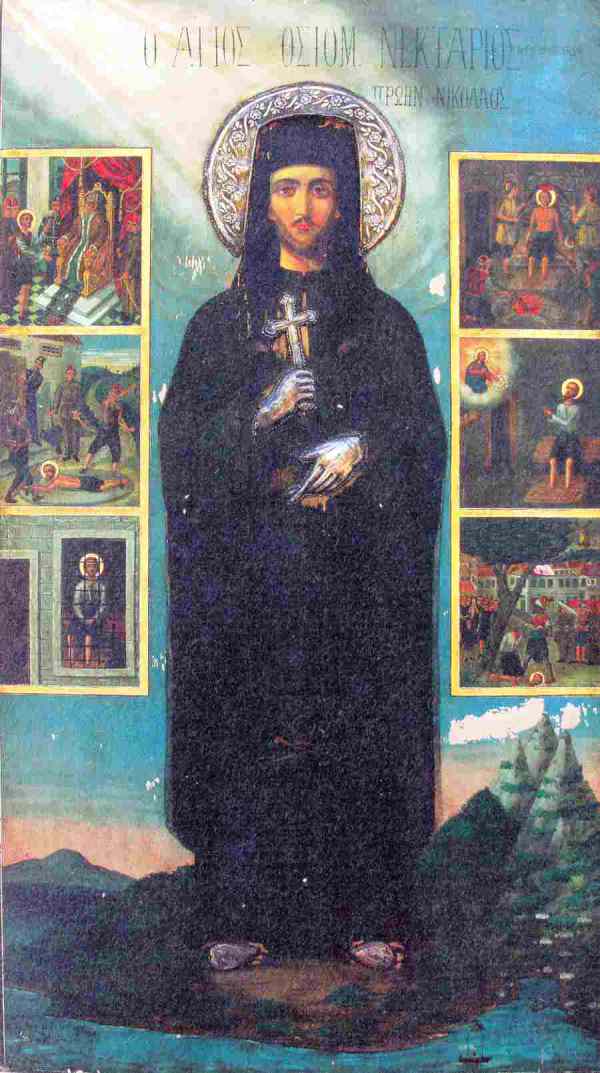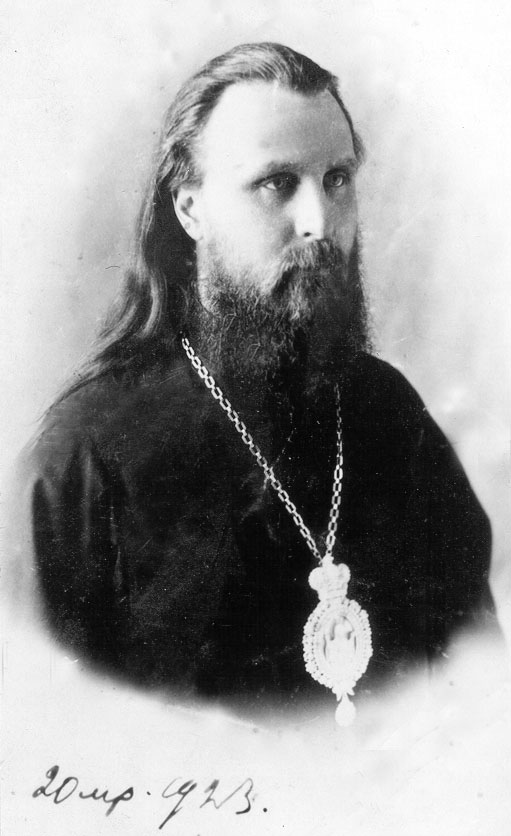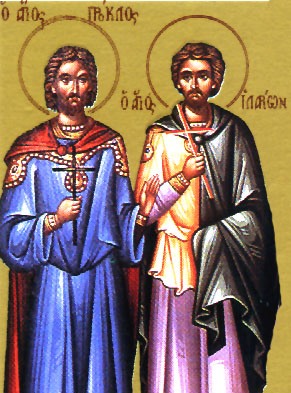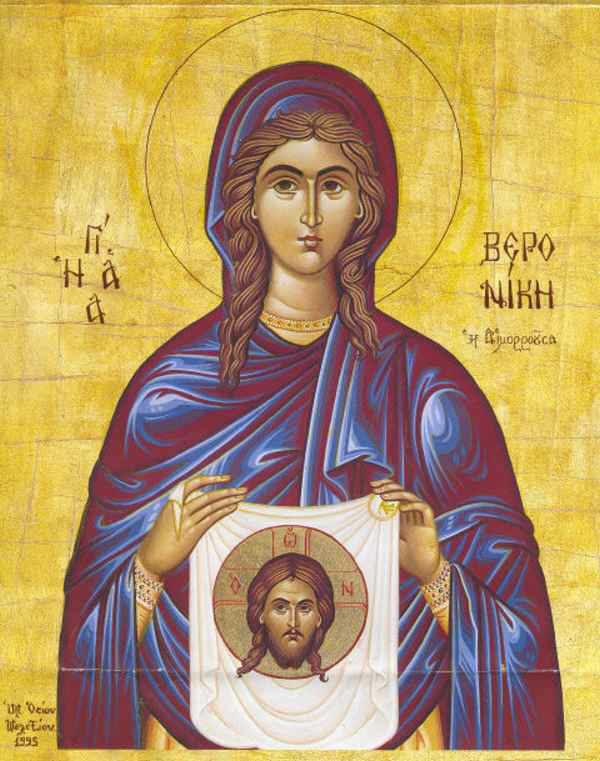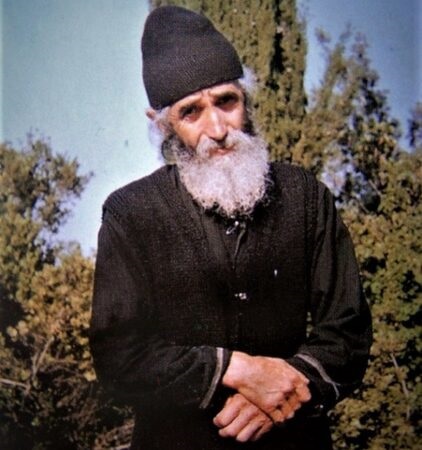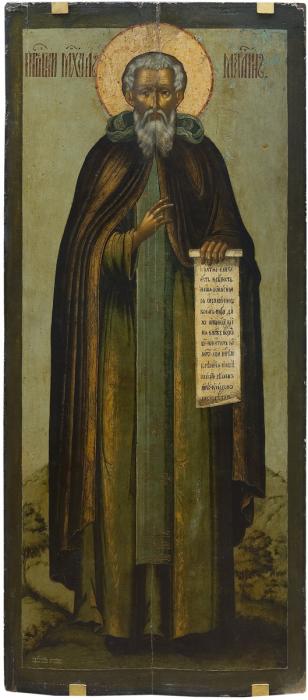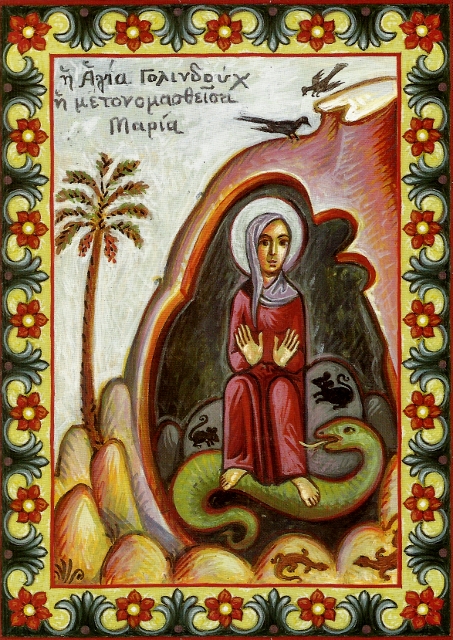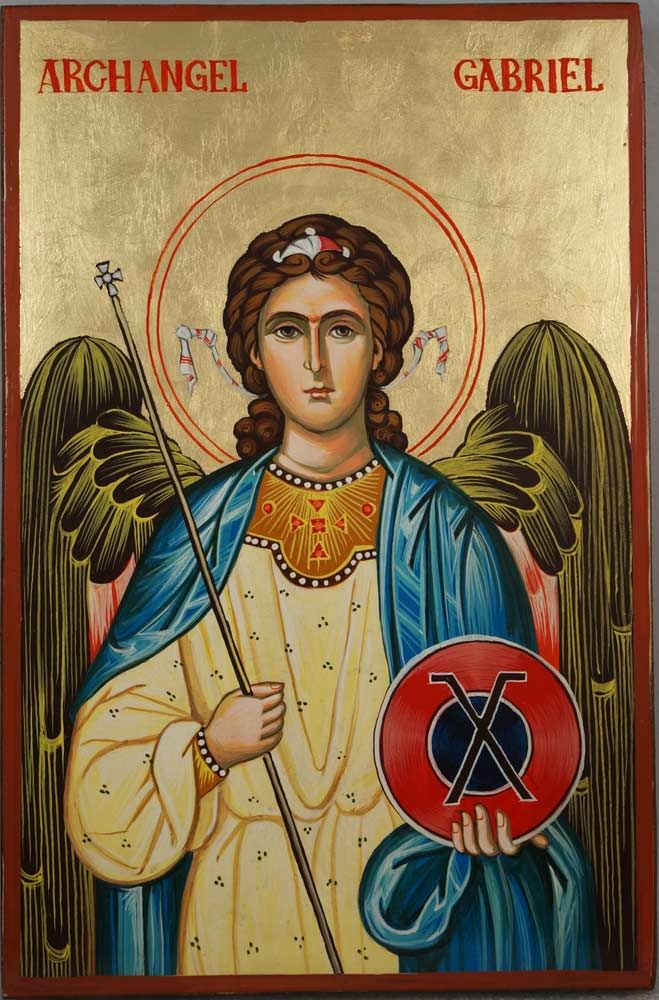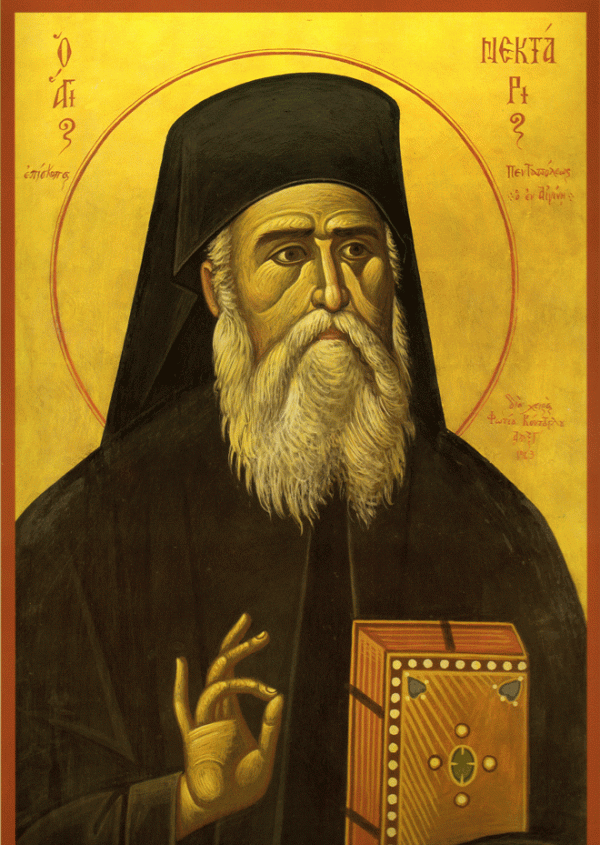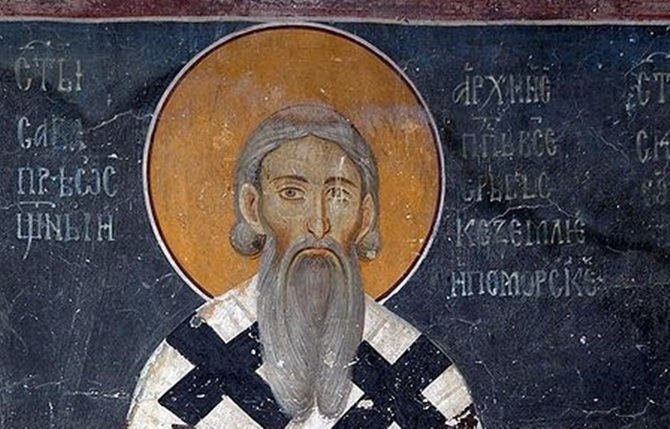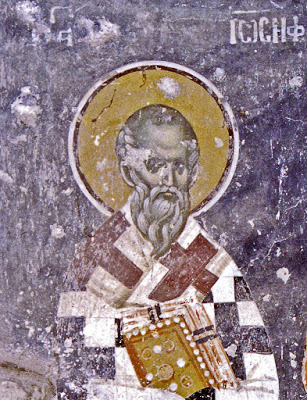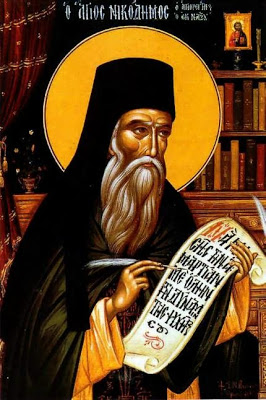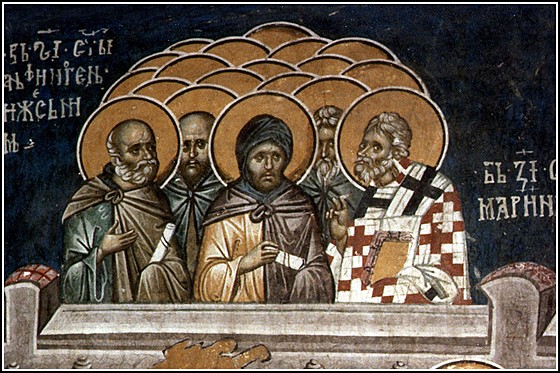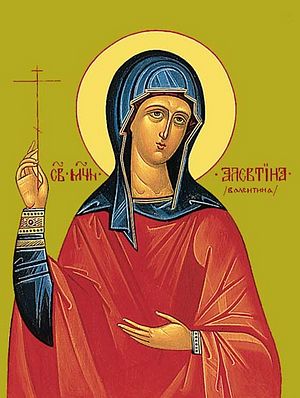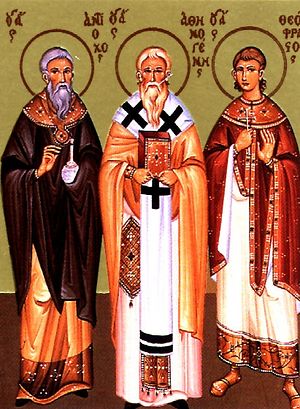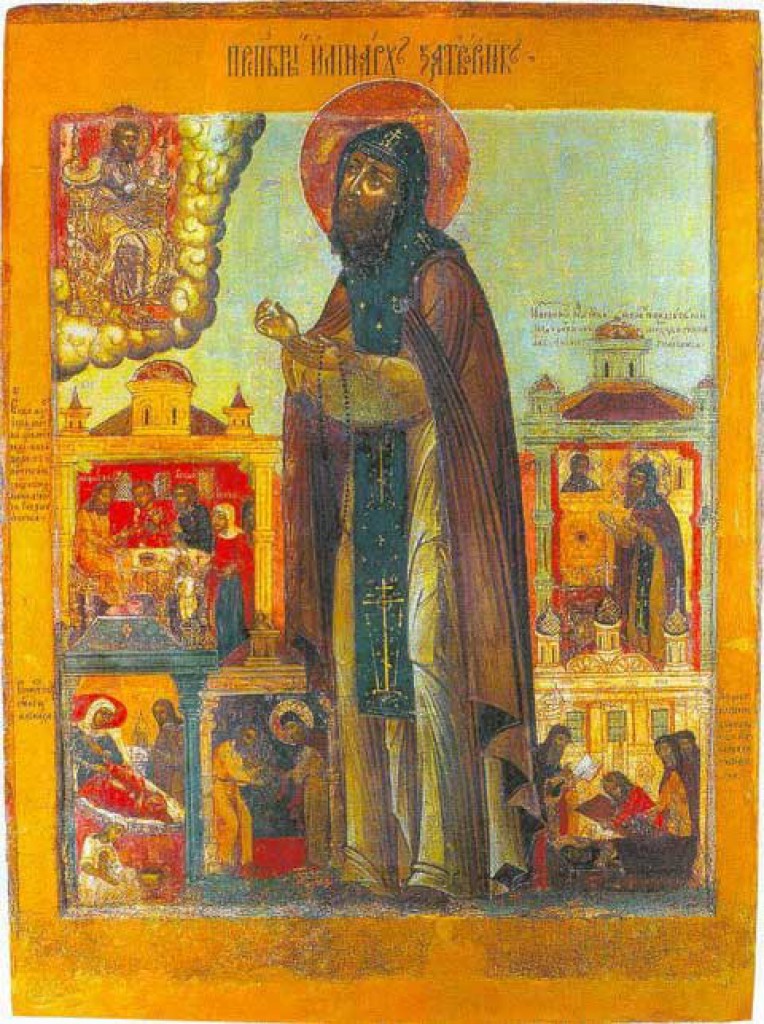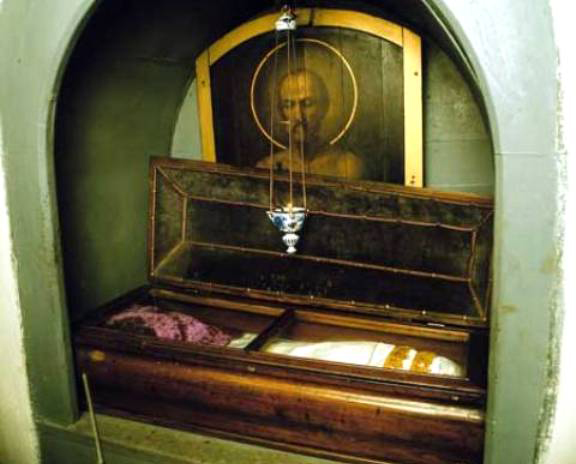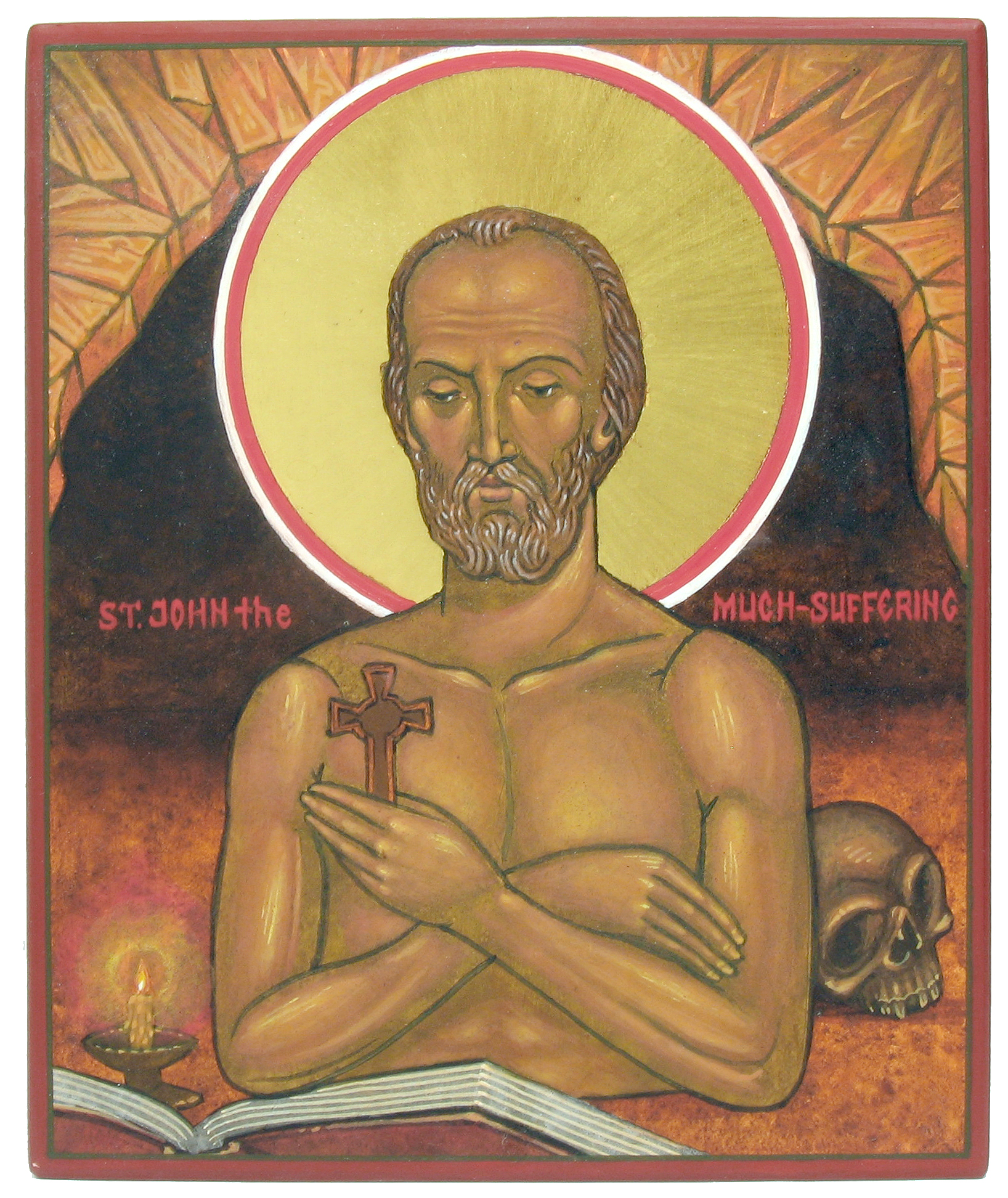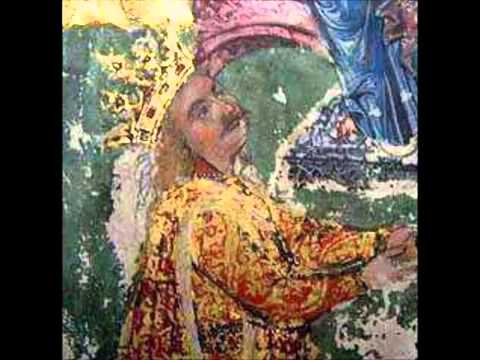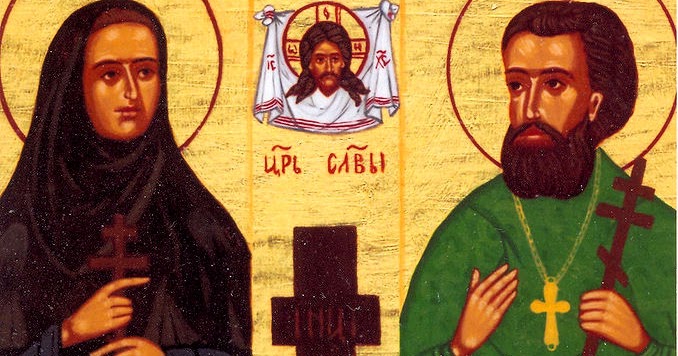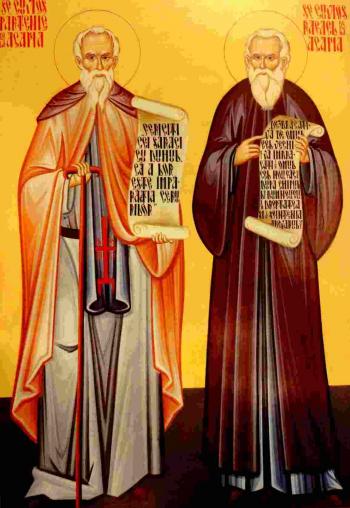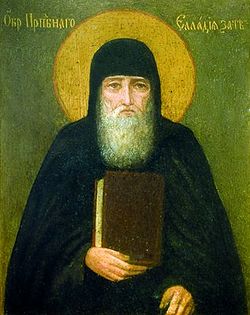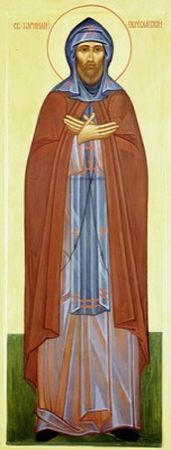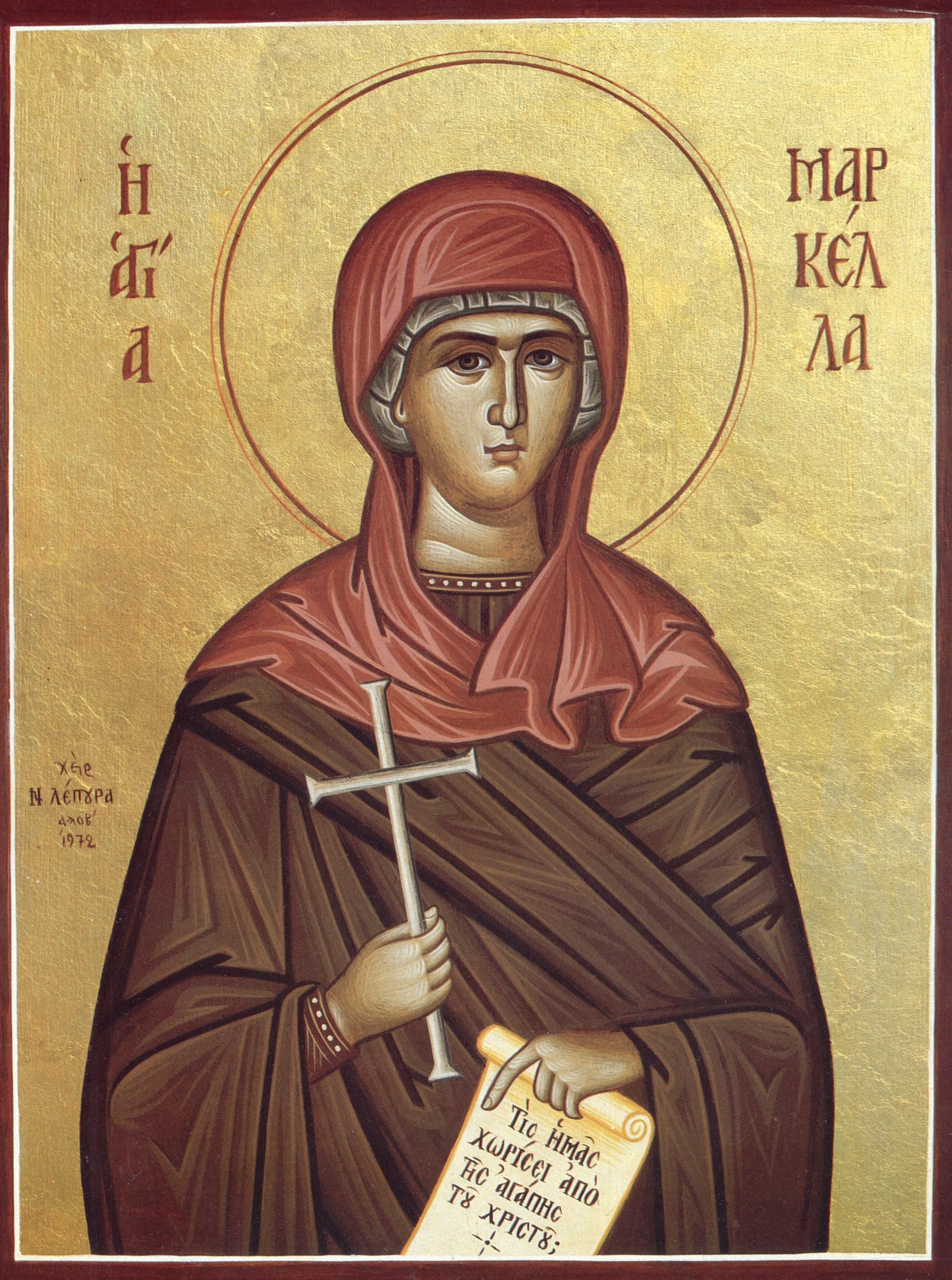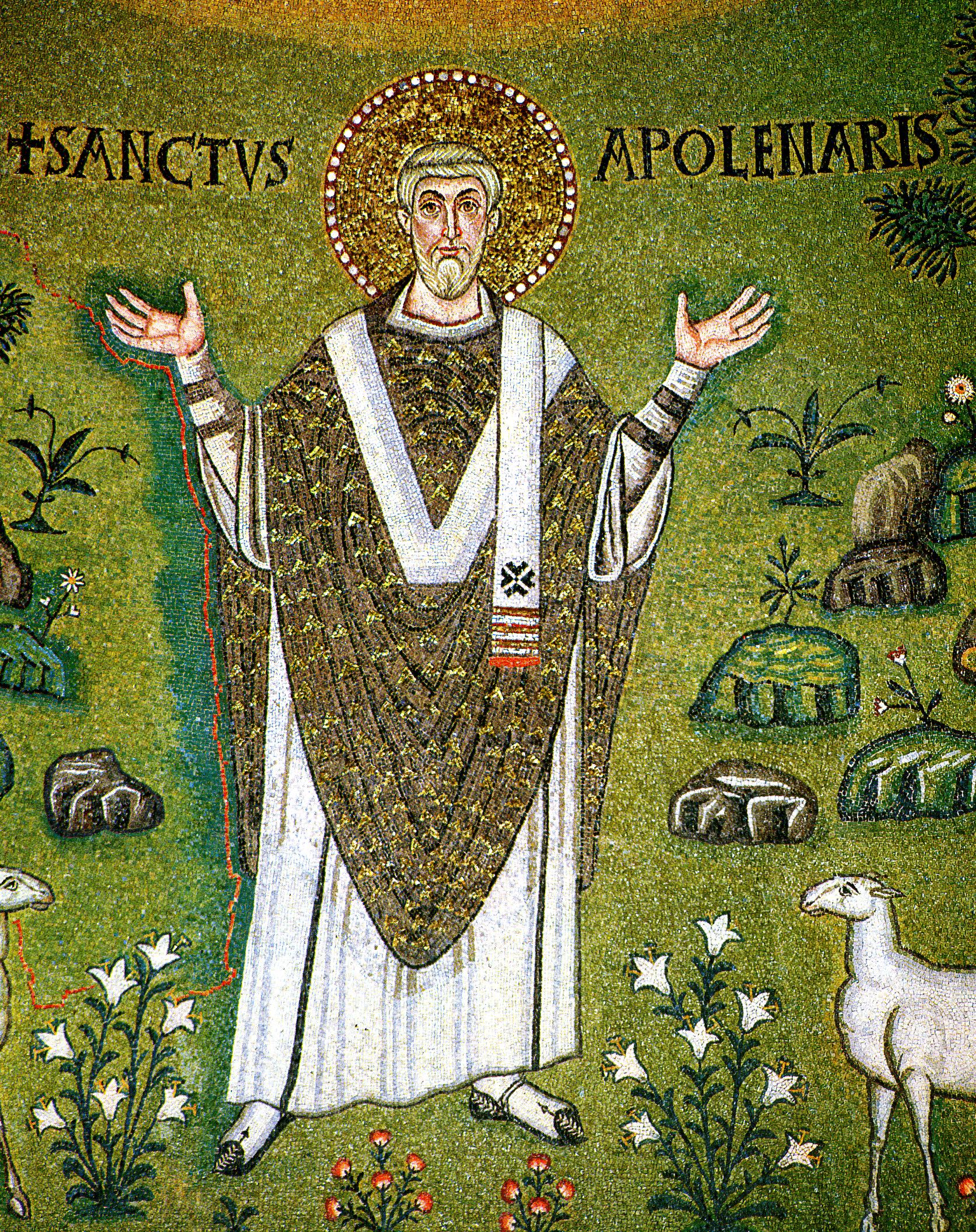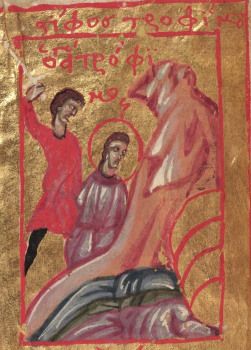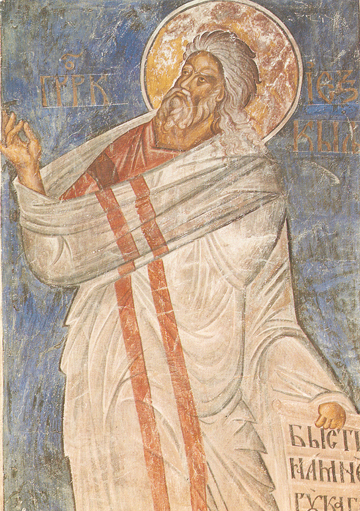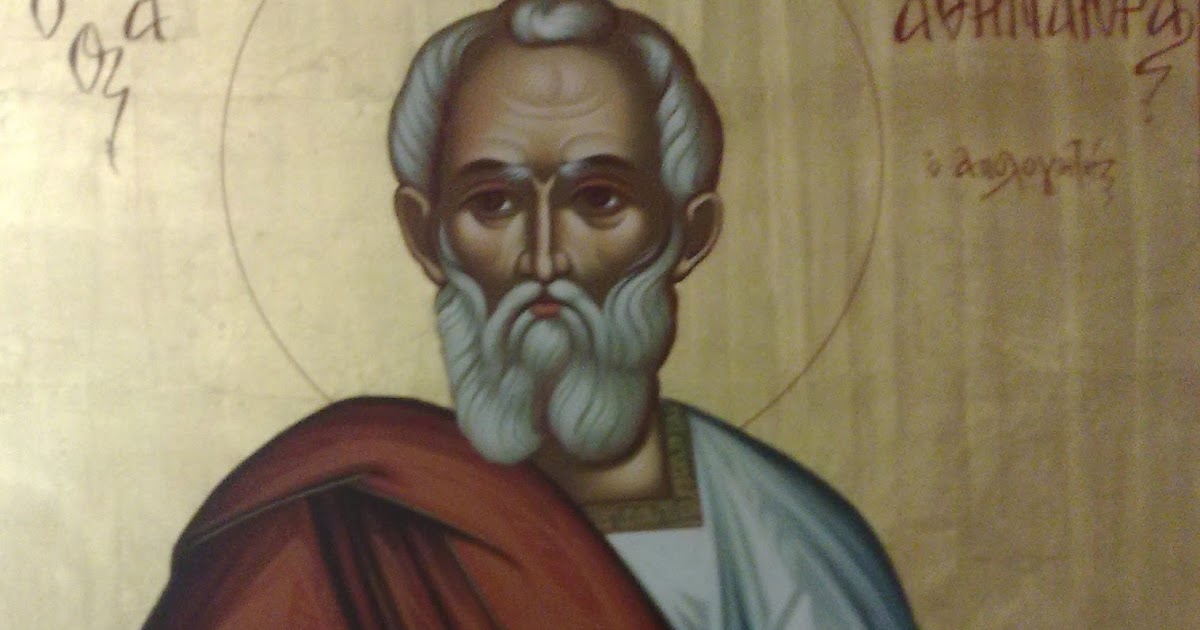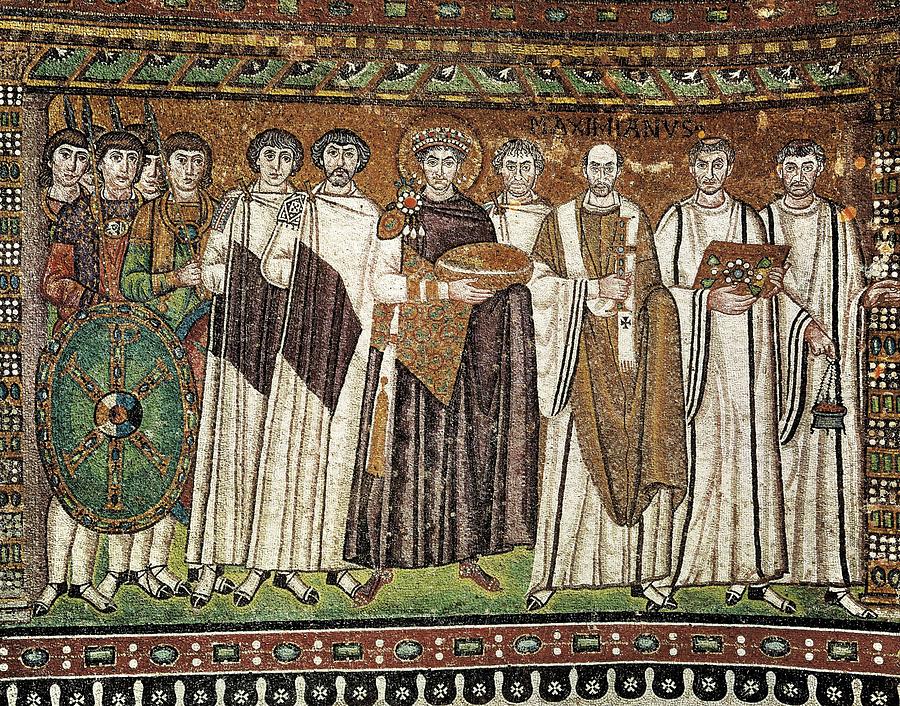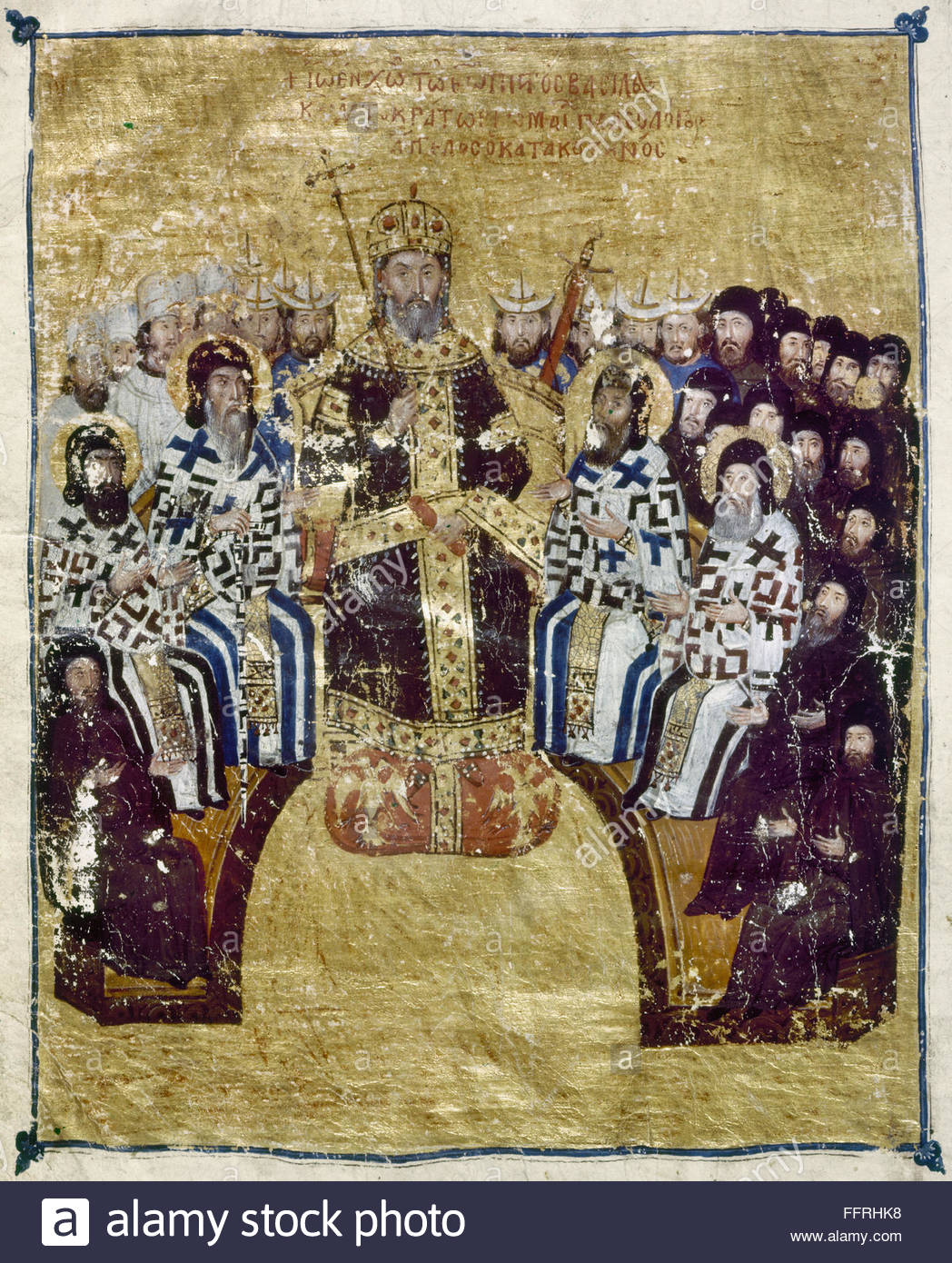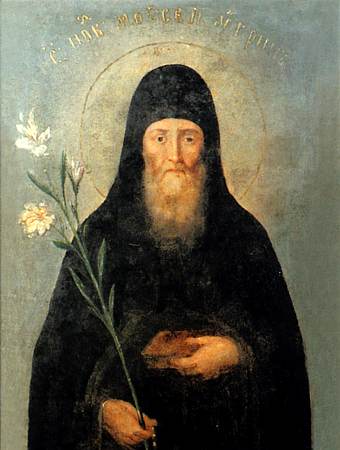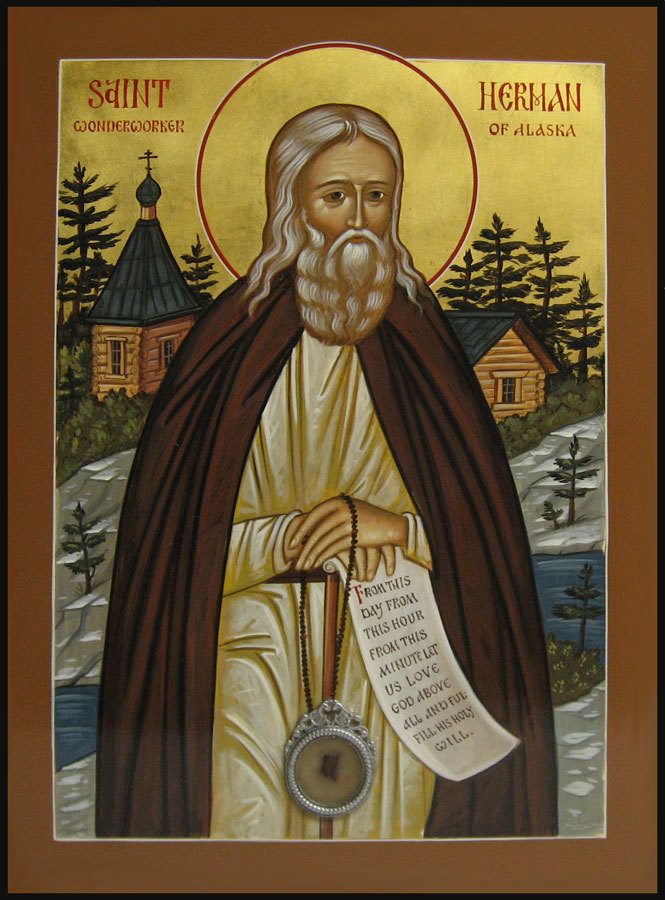- Dec 28, 2017
- 3,779
- 2,856
- Country
- United States
- Faith
- Christian
- Marital Status
- Private
July 10
Lives of the Saints
July 10
• Holy 45 Martyrs of Nikopolis in Armenia (319 A.D.)
During a persecution of Christians in the reign of the Emperor Licinius, Leontius and several of his companions came before the Imperial governor in Nikopolis of Armenia, and declared themselves as Christians. They were whipped and thrown into prison, where they were given no food or drink; but a Christian noblewoman secretly brought them water, and an angel of the Lord appeared to them in their cell to comfort them. Such was the power of their faith that, at their trial, two of their jailers proclaimed their conversion to Christianity. Many others came forward in the same way, until the company of Christians numbered forty-five in all. The judge ordered that they all have their arms and legs hacked off and that they then be burned to death.
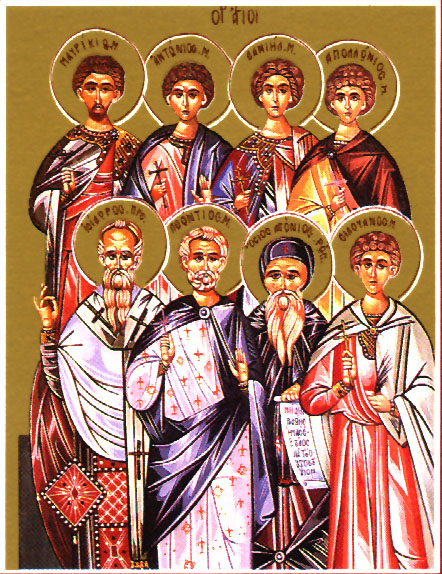
† St Anthony of the Kiev Caves (1073 A.D.)
He is honored as the founder of Orthodox monastic life in Russia. He was born in Chernigov province and tonsured at the Monastery of Esphigmenou on the Holy Mountain. His abbot sent him from Mt Athos to Kiev to establish the monastic life there in 1013, during the last years of Prince Vladimir's holy reign. He lived there as a hermit, slowly drawing to himself others who wished to share the ascetical life. In time, the brotherhood grew into the Kiev Caves Lavra. St Anthony refused to serve as abbot of the monastery; this task was taken up by St Theodosius (commemorated May 3). St Anthony continued to live as a cave-dwelling hermit and reposed in peace at the age of ninety.
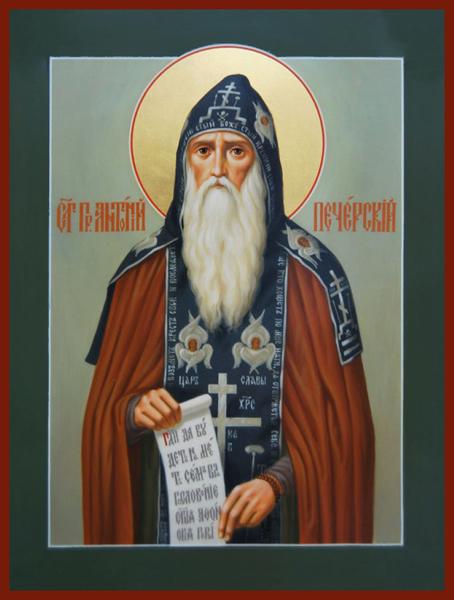
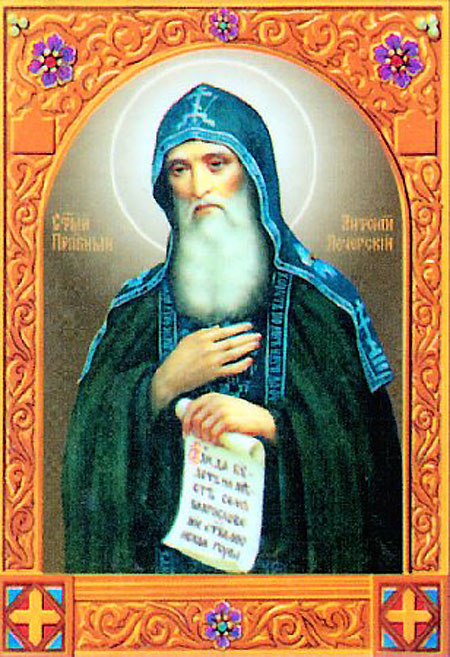
• The Placing of the Precious Robe of the Lord in Moscow (1625 A.D.)
Elias, a soldier in the Roman army in Jerusalem, was a Georgian by birth, from the town of Mtskhet. When the Lord was crucified, his garments were divided by lot among the soldiers, a his robe fell to Elias, who took it home to Georgia and gave it as a gift to his sister Sidonia. The robe was buried with her, then miraculously found many years later by St Nina (January 14). King Mirian, who had accepted Christ in response to St Nina's teaching, built a church to the Holy Apostles on the spot where the robe was found. Many years later, Georgia was conquered by the Persians, and the robe fell into their hands. In 1625 the Persian Shah Abbas, wishing to establish good relations with Russia, sent the robe to Moscow as a gift to Prince Michael Feodorovich and Patriarch Philaret. It was placed with honor in the Cathedral of the Dormition.
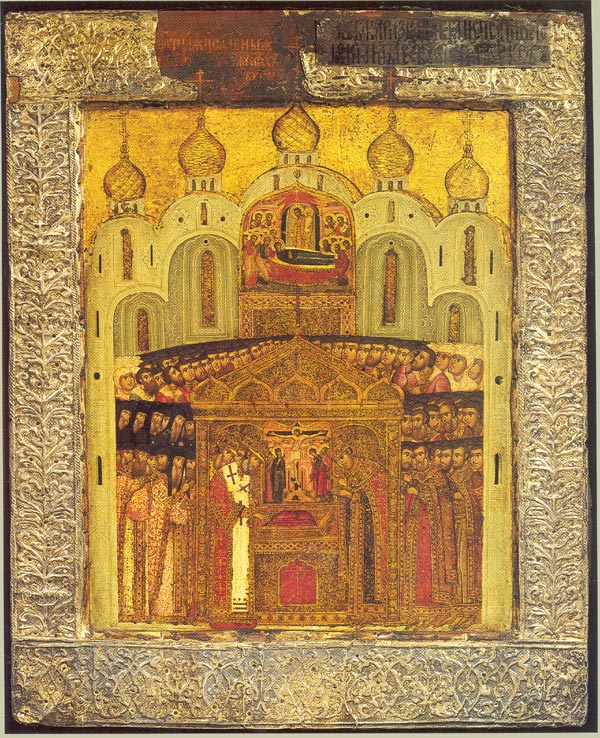
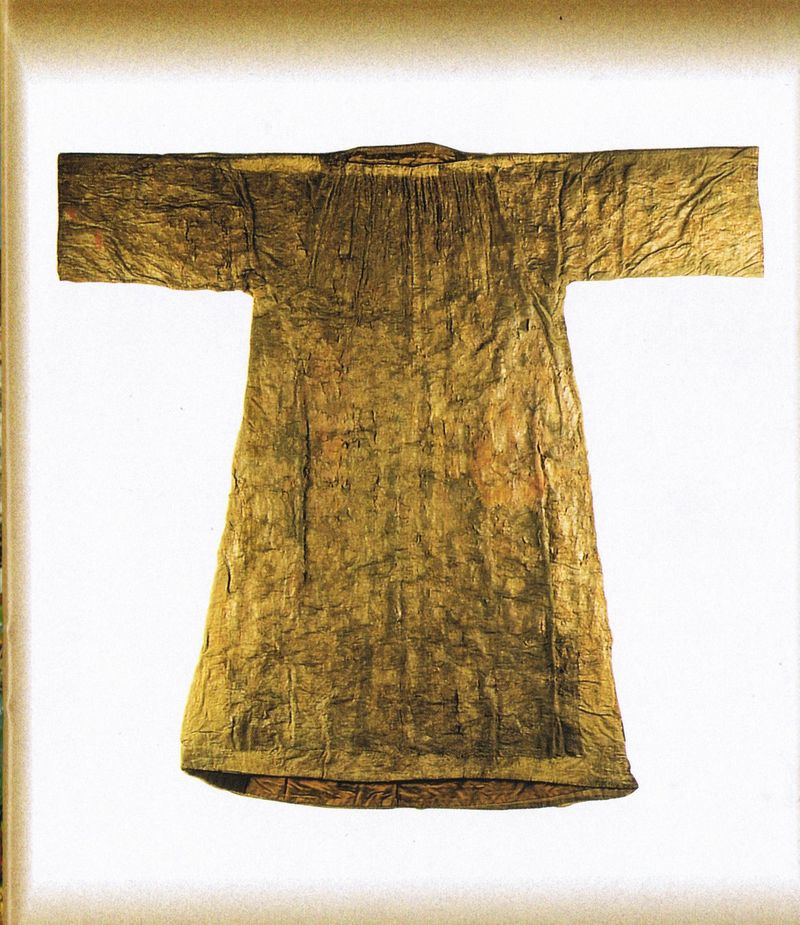
• Venerable Silvanus the Schemamonk of the Kiev Far Caves
The Holy Schemamonk Silvanus (Silouan) of the Kiev Caves, zealously preserved the purity of both soul and body, he subdued his flesh with fasting and vigils, and he cleansed his soul with prayer and meditation on God. The Lord granted him an abundance of spiritual gifts: a prayerful boldness towards God, constant joy in the Lord, clairvoyance and wonderworking. The monk lived at the end of the thirteenth and beginning of the fourteenth centuries. His relics rest in the Caves.
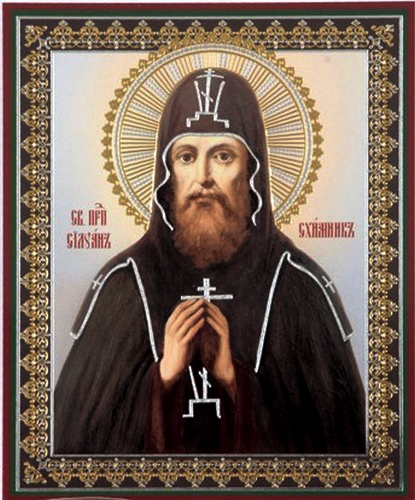
• Martyr Apollonius of Sardis
The Holy Martyr Apollonius came from the city of Sardis, located in Lydia (Asia Minor). He declared himself a Christian and was arrested. When they demanded that he swear an oath on the name of the emperor, he refused, saying that it was improper to swear on the name of a mortal man. They tortured Apollonius for a long time and then crucified him. This occurred at Iconium either under the emperor Decius (249-251) or the emperor Valerian (253-259).
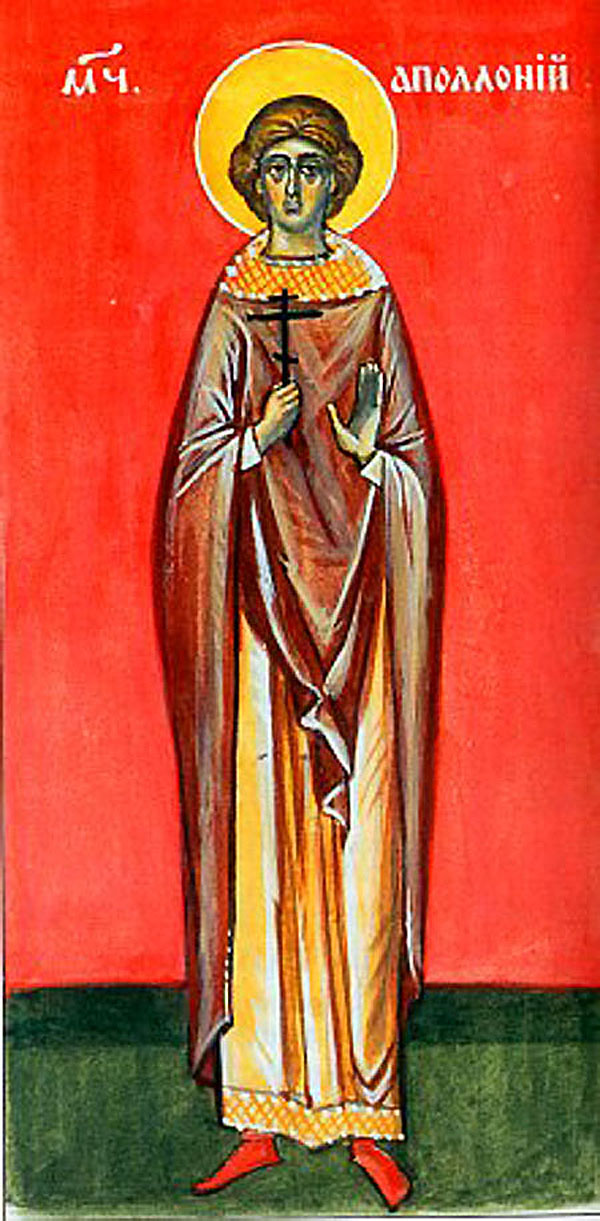
• Martyrs Bianor and Silvanus of Pisidia
Saint Bianor came from the Pisidia district of Asia Minor. As a confessor of Christianity they brought him to the prefect of the city of Isauria in Lykaonia, who demanded that Saint Bianor renounce Christ. The saint stood steadfast in the true Faith, in spite of the refined tortures. A man by the name of Silvanus beheld the suffering of the martyr. The endurance and bravery of Saint Bianor inspired the faith of Christ in Silvanus, and he openly declared this. They cut out his tongue and then cut off his head. Saint Bianor, after long torturing, was also beheaded.
The date of the suffering of the holy Martyrs Bianor and Silvanus is not precisely known. It is presumed that they died in Pisidia under the Roman emperor Diocletian (284-305).
• 10,000 Martyred Fathers of the Deserts and Caves of Scete by the Impious Patriarch Theophilus of Alexandria
These holy martyrs of Christ, who lived in the deserts and caves of the Nitrian desert, were delivered up by Patriarch Theophilus of Alexandria to face a bitter death. He falsely accused them of Origenism, but in fact they incurred the patriarch’s anger by giving shelter to the priest Isidore.
• Martyr Nikodemos of Elbassan Albania
• Monastic Martyr Nectarius of Saint Anne Skete on Mount Athos
• Icon of the Mother of God of Konevits
The Konevits Icon of the Mother of God: It was with this icon of Greek origin that John, igumen of one of the Athonite monasteries, blessed Saint Arsenius, founder of the Konevits monastery (June 12). The holy icon was glorified by many miracles.
In the year 1610, during an invasion of the Swedes into the Novgorod territory, the icon was transferred from the Konevits monastery to the Novgorod Derevianits monastery with the blessing of Archbishop Isidore of Novgorod. Each year on July 10 a festal celebration of the Most Holy Theotokos took place at this monastery in honor of Her holy icon. In the year 1799, with the blessing of the Metropolitan Gabriel of Petersburg and Novgorod (+ January 26, 1801), the wonderworking icon was returned to the Konevits monastery. The return of the icon to the Konevits Monastery is celebrated on September 3.
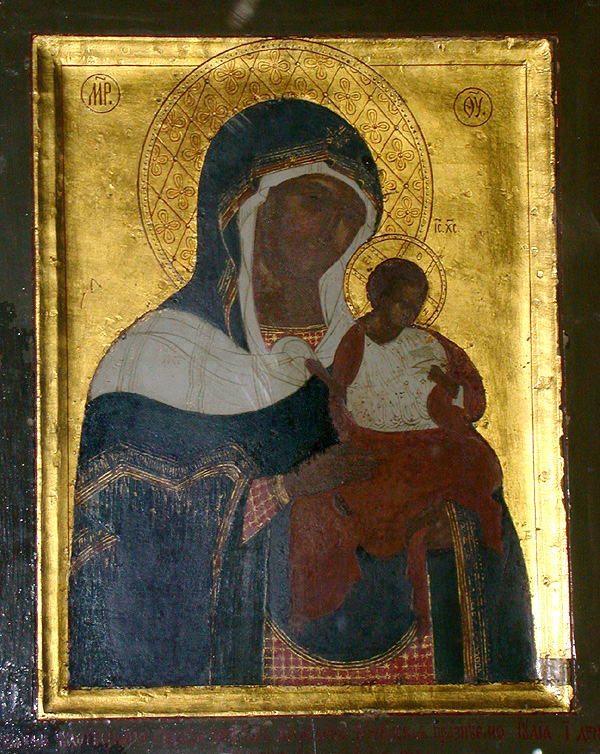
• Saint Joseph, and his companions, of Damascus
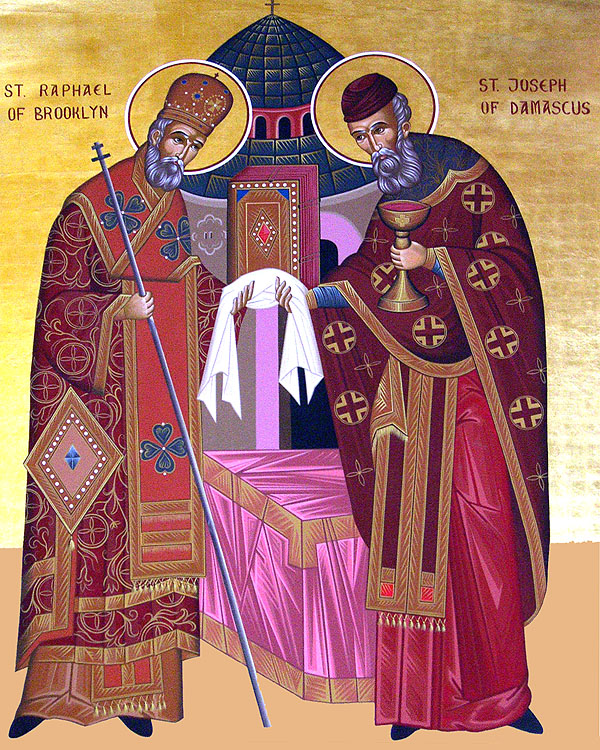
July 10
CONTEMPLATION
To contemplate the miraculous appearance of God to Moses on Mt. Sinai (Exodus 19):
1. How Moses climbed to the top of Mt. Sinai and entered the darkness where God was: I am coming to you in a dense cloud [Exodus 19:9];
2. How the light of God is so great that, before it, all of nature and her light become darkness;
3. How the heart of man is like Mt. Sinai: in the darkness of the heart, there God encounters man.
.
Lives of the Saints
July 10
• Holy 45 Martyrs of Nikopolis in Armenia (319 A.D.)
During a persecution of Christians in the reign of the Emperor Licinius, Leontius and several of his companions came before the Imperial governor in Nikopolis of Armenia, and declared themselves as Christians. They were whipped and thrown into prison, where they were given no food or drink; but a Christian noblewoman secretly brought them water, and an angel of the Lord appeared to them in their cell to comfort them. Such was the power of their faith that, at their trial, two of their jailers proclaimed their conversion to Christianity. Many others came forward in the same way, until the company of Christians numbered forty-five in all. The judge ordered that they all have their arms and legs hacked off and that they then be burned to death.
† St Anthony of the Kiev Caves (1073 A.D.)
He is honored as the founder of Orthodox monastic life in Russia. He was born in Chernigov province and tonsured at the Monastery of Esphigmenou on the Holy Mountain. His abbot sent him from Mt Athos to Kiev to establish the monastic life there in 1013, during the last years of Prince Vladimir's holy reign. He lived there as a hermit, slowly drawing to himself others who wished to share the ascetical life. In time, the brotherhood grew into the Kiev Caves Lavra. St Anthony refused to serve as abbot of the monastery; this task was taken up by St Theodosius (commemorated May 3). St Anthony continued to live as a cave-dwelling hermit and reposed in peace at the age of ninety.

• The Placing of the Precious Robe of the Lord in Moscow (1625 A.D.)
Elias, a soldier in the Roman army in Jerusalem, was a Georgian by birth, from the town of Mtskhet. When the Lord was crucified, his garments were divided by lot among the soldiers, a his robe fell to Elias, who took it home to Georgia and gave it as a gift to his sister Sidonia. The robe was buried with her, then miraculously found many years later by St Nina (January 14). King Mirian, who had accepted Christ in response to St Nina's teaching, built a church to the Holy Apostles on the spot where the robe was found. Many years later, Georgia was conquered by the Persians, and the robe fell into their hands. In 1625 the Persian Shah Abbas, wishing to establish good relations with Russia, sent the robe to Moscow as a gift to Prince Michael Feodorovich and Patriarch Philaret. It was placed with honor in the Cathedral of the Dormition.

• Venerable Silvanus the Schemamonk of the Kiev Far Caves
The Holy Schemamonk Silvanus (Silouan) of the Kiev Caves, zealously preserved the purity of both soul and body, he subdued his flesh with fasting and vigils, and he cleansed his soul with prayer and meditation on God. The Lord granted him an abundance of spiritual gifts: a prayerful boldness towards God, constant joy in the Lord, clairvoyance and wonderworking. The monk lived at the end of the thirteenth and beginning of the fourteenth centuries. His relics rest in the Caves.
• Martyr Apollonius of Sardis
The Holy Martyr Apollonius came from the city of Sardis, located in Lydia (Asia Minor). He declared himself a Christian and was arrested. When they demanded that he swear an oath on the name of the emperor, he refused, saying that it was improper to swear on the name of a mortal man. They tortured Apollonius for a long time and then crucified him. This occurred at Iconium either under the emperor Decius (249-251) or the emperor Valerian (253-259).
• Martyrs Bianor and Silvanus of Pisidia
Saint Bianor came from the Pisidia district of Asia Minor. As a confessor of Christianity they brought him to the prefect of the city of Isauria in Lykaonia, who demanded that Saint Bianor renounce Christ. The saint stood steadfast in the true Faith, in spite of the refined tortures. A man by the name of Silvanus beheld the suffering of the martyr. The endurance and bravery of Saint Bianor inspired the faith of Christ in Silvanus, and he openly declared this. They cut out his tongue and then cut off his head. Saint Bianor, after long torturing, was also beheaded.
The date of the suffering of the holy Martyrs Bianor and Silvanus is not precisely known. It is presumed that they died in Pisidia under the Roman emperor Diocletian (284-305).
• 10,000 Martyred Fathers of the Deserts and Caves of Scete by the Impious Patriarch Theophilus of Alexandria
These holy martyrs of Christ, who lived in the deserts and caves of the Nitrian desert, were delivered up by Patriarch Theophilus of Alexandria to face a bitter death. He falsely accused them of Origenism, but in fact they incurred the patriarch’s anger by giving shelter to the priest Isidore.
• Martyr Nikodemos of Elbassan Albania
• Monastic Martyr Nectarius of Saint Anne Skete on Mount Athos
• Icon of the Mother of God of Konevits
The Konevits Icon of the Mother of God: It was with this icon of Greek origin that John, igumen of one of the Athonite monasteries, blessed Saint Arsenius, founder of the Konevits monastery (June 12). The holy icon was glorified by many miracles.
In the year 1610, during an invasion of the Swedes into the Novgorod territory, the icon was transferred from the Konevits monastery to the Novgorod Derevianits monastery with the blessing of Archbishop Isidore of Novgorod. Each year on July 10 a festal celebration of the Most Holy Theotokos took place at this monastery in honor of Her holy icon. In the year 1799, with the blessing of the Metropolitan Gabriel of Petersburg and Novgorod (+ January 26, 1801), the wonderworking icon was returned to the Konevits monastery. The return of the icon to the Konevits Monastery is celebrated on September 3.
• Saint Joseph, and his companions, of Damascus
July 10
CONTEMPLATION
To contemplate the miraculous appearance of God to Moses on Mt. Sinai (Exodus 19):
1. How Moses climbed to the top of Mt. Sinai and entered the darkness where God was: I am coming to you in a dense cloud [Exodus 19:9];
2. How the light of God is so great that, before it, all of nature and her light become darkness;
3. How the heart of man is like Mt. Sinai: in the darkness of the heart, there God encounters man.
.
Last edited:
Upvote
0

